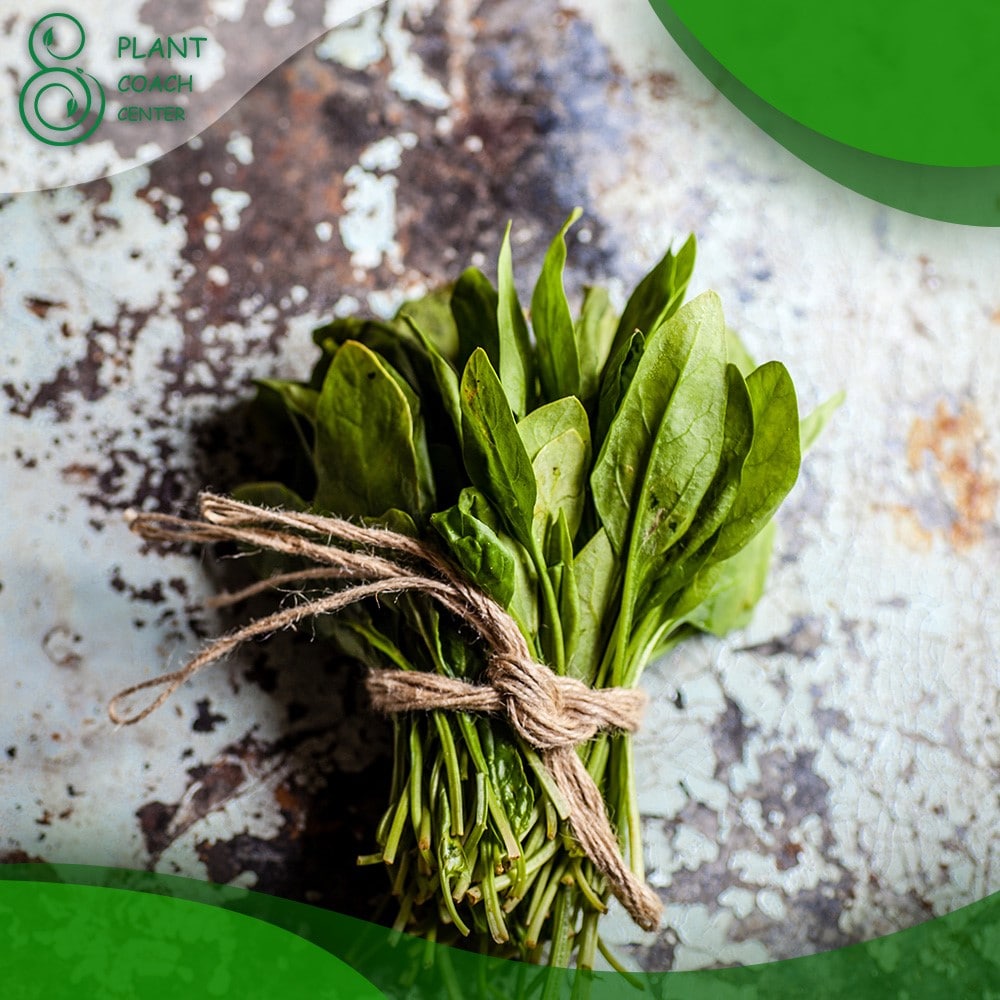When Do You Plant Spinach?
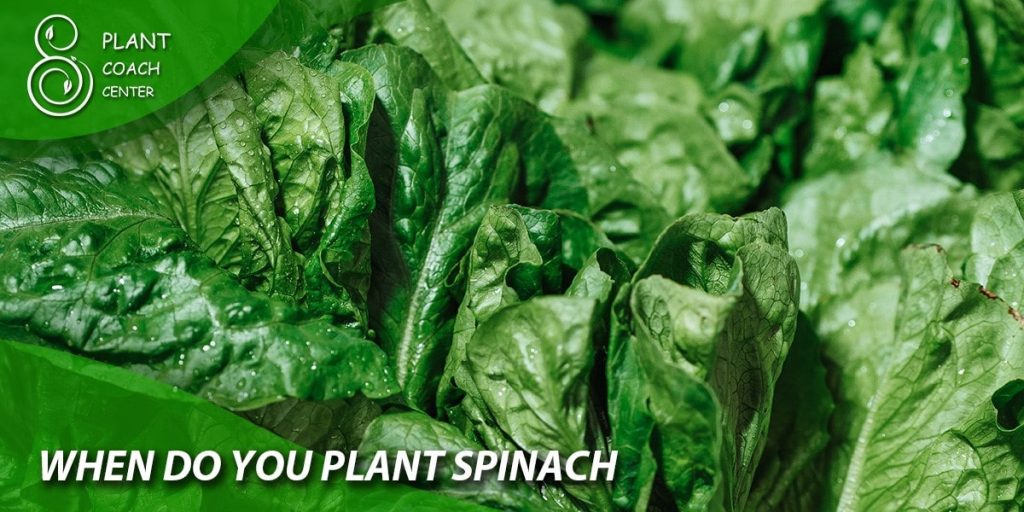
Welcome to the verdant world of spinach cultivation! Whether you’re a seasoned gardener or just starting to explore the joys of homegrown greens, understanding the optimal timing for planting Spinach is a pivotal factor in your gardening success. With its tender leaves and incredible versatility, Spinach is a nutritional powerhouse that deserves a prime spot in your garden.
But knowing when to sow those first seeds or transplant those eager seedlings can make all the difference between lackluster growth and a bountiful harvest. In this guide, we journey through the seasons, unearthing the secrets of when to plant Spinach for maximum yield and flavor.
From the delicate dance of soil temperatures to the choice between direct seeding and transplanting, we’ll unravel the intricacies contributing to spinach triumph. Whether cultivating a small balcony garden or a sprawling backyard oasis, join us as we dig deep into the art and science of planting Spinach, ensuring your greens thrive. Your plates are adorned with the freshest, homegrown goodness.
Seasonal Spinach: A Planting Timeline
Spinach, a cool-season crop, offers your culinary creations a delightful array of flavors and textures. To achieve the best results, it’s crucial to plant Spinach at the right time, considering the seasonal variations that affect its growth. Let’s embark on a journey through the calendar to uncover the ideal planting timeline for spinach cultivation:
Early Spring (March – April)
As the grip of winter loosens, and the soil begins to thaw, early spring marks the perfect window for planting Spinach. The ground is still excellent, providing the right conditions for germination and establishment. Opt for varieties known for their cold tolerance. Be prepared to protect your young plants with row covers or cloths from potential late frosts.
Late Spring to Early Summer (May – June)
Late spring brings warmer temperatures, which can trigger Spinach to bolt and turn bitter. To counter this, consider planting heat-resistant spinach varieties or providing shade to relax the soil and plants. Succession planting every two weeks ensures a continuous harvest.
Late Summer to Early Fall (August – September)
As summer wanes and the heat abates, it’s time to prepare for a fall harvest. Plant spinach in late summer for a late-fall bounty. Keep the soil consistently moist to aid germination, and consider planting in partial shade to mitigate the effects of lingering summer warmth.
Late Fall to Early Winter (October – November)
Spinach can be sown in late fall for winter harvesting in mild-winter regions. The cool weather enhances its sweetness, making for delectable dishes. However, ensure your Spinach has sufficient time to establish itself before the harshest cold sets in.
Sowing Seeds vs. Transplants: Which Works Best?
When starting your spinach journey, a fundamental decision awaits: should you sow spinach seeds directly in the soil or opt for transplanting young seedlings? Each method has advantages and considerations, allowing you to tailor your approach to your gardening style and preferences.
Sowing Seeds
Directly sowing spinach seeds in the soil offers a hands-on, traditional approach. It’s a cost-effective method that allows you to observe the entire growth cycle, from germination to maturity. Prepare well-draining soil with ample organic matter to ensure successful seed sowing.
Plant the seeds about half an inch deep and an inch apart, then gently water the area. Keep the soil moist until germination occurs, usually within 7 to 14 days. Thin the seedlings to provide enough Space for growth, typically spacing them 4 to 6 inches apart.
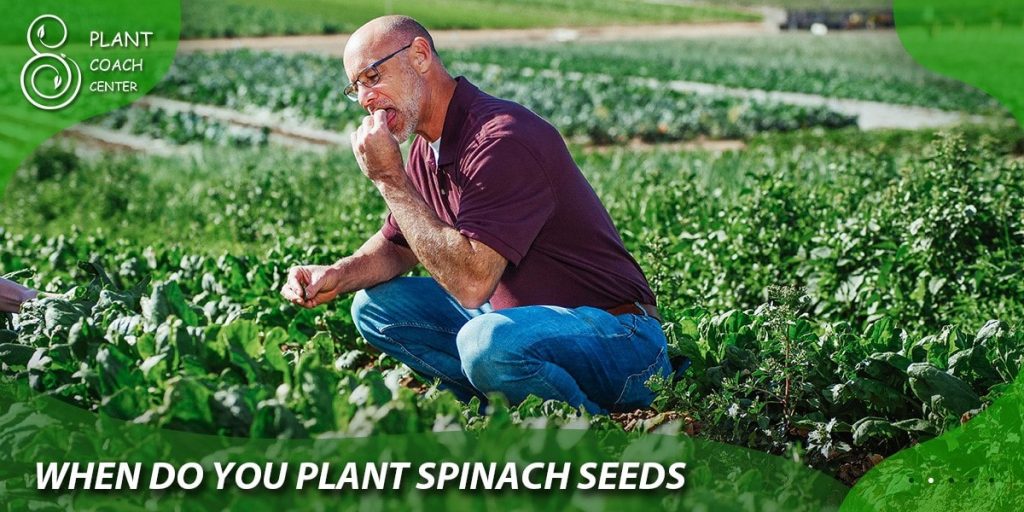
Transplanting Seedlings
Starting with transplants provides a head start, allowing you to bypass the germination phase and potentially extend your growing season. You can purchase young spinach plants from a nursery or start indoors 4 to 6 weeks before the last frost date.
Transplants should have at least two sets of true leaves before being planted outdoors. When transplanting, handle the seedlings carefully to avoid damaging their delicate roots. Space them according to the recommendations, providing ample room for their mature size.
Choosing the Right Method
The decision between seeds and transplants ultimately depends on your gardening goals and local conditions. Sources are great for those who relish the gardening experience and have a longer growing season.
Transplants offer convenience and a jump-start in regions with shorter growing windows or unreliable germination conditions. Remember that both methods require consistent care, including proper watering, fertilizing, and pest management.
Soil Temperature: The Crucial Factor for Spinach Success
In gardening, success often hinges on the delicate balance of various factors, and soil temperature ranks high among them, especially for Spinach. This unassuming leafy green has specific temperature preferences for germination and growth, making monitoring and managing soil temperature throughout the planting process essential.
Germination Temperature
Spinach seeds are not fans of extreme temperatures. They thrive when the soil temperature falls within the range of 50°F to 70°F (10°C to 21°C). The more fantastic end of this spectrum is particularly favorable, as it encourages prompt germination. If the soil is too warm, the seeds might not germinate well or even become dormant, delaying the emergence of your spinach seedlings.
Cool-Season Gardening
The advantage of Spinach is its adaptability to cool-season gardening. Planting Spinach in early spring or late summer allows you to work with naturally cooler soil temperatures.
You can employ tactics such as pre-warming the soil using black plastic or row covers to aid germination. Conversely, planting Spinach during the cooler months in warmer regions can help you achieve optimal temperature conditions.
Measuring Soil Temperature
Investing in a soil thermometer is a savvy move for any spinach enthusiast. Measure the soil temperature at a depth of 1 to 2 inches (2.5 to 5 cm) – where most spinach seeds are sown. Take readings at different times of the day and in various spots in your garden to accurately represent the soil’s temperature profile.
Mitigating High Temperatures
As the weather warms, you must protect your Spinach from overheating. Mulching is an effective technique, as it shields the soil from direct sun exposure, keeping it cooler. Providing shade with row covers or surrounding taller plants can create a cooler microclimate that benefits your Spinach.
Bottom Line
In the intricate dance of spinach cultivation, soil temperature takes center stage. Understanding its pivotal role and fine-tuning your approach creates an environment where Spinach thrives from seed to plate. Monitoring the temperature, adjusting your planting times, and implementing protective measures will set the stage for a successful spinach-growing endeavor, bringing vibrant, nutrient-rich leaves to your table.
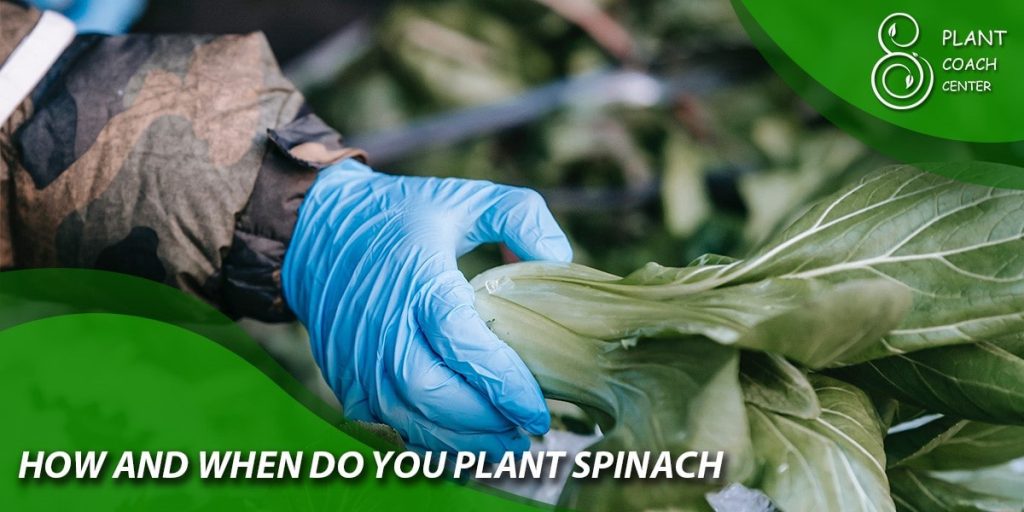
Companion Planting: Spinach’s Garden Allies
In the ever-connected world of gardening, companion planting has gained traction to enhance the growth of various crops. As a team player in the garden, Spinach has its own allies that can contribute to its vitality and discourage unwanted pests. By strategically selecting companions for your Spinach, you create a thriving ecosystem that benefits all.
Strawberries
The pairing of strawberries and Spinach is a harmonious one. Strawberries provide low-growing shade that helps keep the soil around Spinach cool and moist, while Spinach leaves act as a living mulch, shading the soil around the strawberries’ roots. This partnership maximizes Space and resources, benefiting both crops.
Radishes
Radishes are more than just a zesty addition to your salads – they can be excellent neighbors for Spinach. Radishes deter soil-dwelling pests like aphids and leafminers, which also bother Spinach. The fast growth of radishes means they’ll be harvested before they start competing for Space with the Spinach.
Nasturtiums
These vibrant and peppery flowers add a pop of color to your garden and serve as bodyguards for your Spinach. Nasturtiums repel aphids, which are a common pest for Spinach. Their presence helps create a less inviting environment for these tiny invaders.
Lettuce
Spinach and lettuce share similar growth habits and care requirements, making them compatible companions. Planting them together can lead to efficient space utilization and complementary growth. Plus, the lettuce’s shade can help keep the soil around the Spinach cool, preventing premature Bolting.
Borage
Known for its attractive blue flowers, borage is a powerhouse in the garden. It’s a pollinator magnet, drawing beneficial insects that prey on pests like caterpillars and aphids. This indirectly safeguards your Spinach from potential infestations.
Beans
Beans, particularly bush beans, can be planted alongside Spinach. They help fix nitrogen in the soil, enriching it with this essential nutrient that Spinach appreciates. Ensure that the beans don’t overshadow the Spinach, as both crops need their fair share of sunlight.
Indoor vs. Outdoor: Navigating Different Growing Environments
The age-old debate of indoor versus outdoor gardening isn’t limited to sprawling crops – it also extends to humble leafy greens like Spinach. Both approaches have their merits, and the choice between them depends on your Space, resources, and goals. Let’s explore the nuances of each environment to help you make an informed decision for your spinach cultivation.
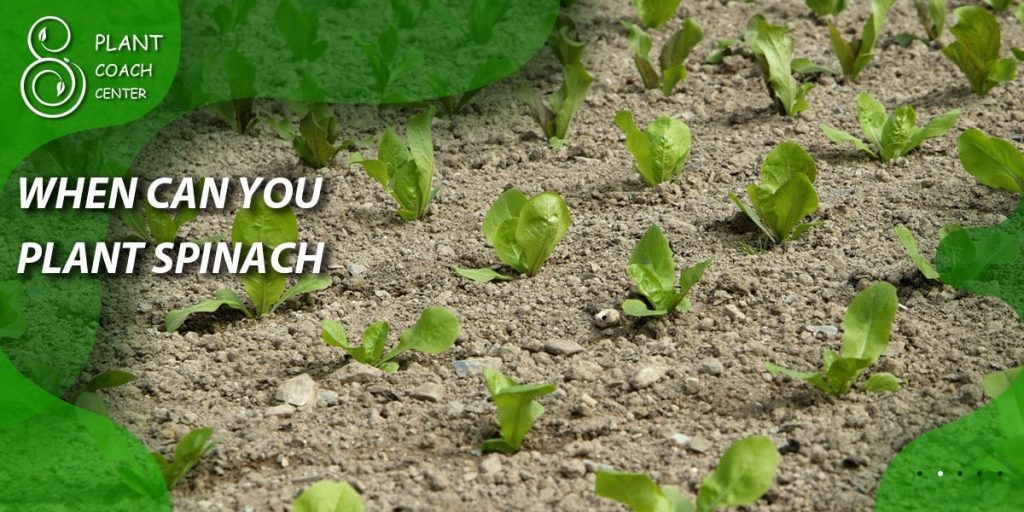
Indoor Growing
Indoor gardening offers precise control over the growing conditions, making it a viable option for year-round spinach cultivation.
Utilizing containers, hydroponics, or a sunny windowsill, you can create a controlled microclimate where temperature, light, and moisture are tailored to your Spinach’s needs. This is particularly beneficial in regions with harsh winters or limited outdoor Space.
Pros
Year-round availability: No need to worry about seasonal constraints.
Pest control: Indoor environments can be better shielded from pests and diseases.
Optimal conditions: Tailor light, temperature, and humidity to perfection.
Cons:
Limited Space: Indoor setups might restrict the amount of Spinach you can grow.
Initial investment: Equipment, like grow lights and hydroponic systems, can be costly.
Outdoor Growing
The great outdoors offers a rich and diverse ecosystem for your Spinach. The natural sunlight, rainfall, and soil provide an authentic, growing experience. Outdoor gardening is well-suited for regions with milder climates and ample garden space.
Pros:
Natural sunlight: Outdoor spinach benefits from full-spectrum sunlight.
Larger yields: More Space outdoors often translates to higher profits.
Cost-effective: Minimal equipment investment beyond essential gardening tools.
Cons:
Seasonal limitations: Spinach growth is tied to specific seasons, limiting year-round supply.
Pest and weather challenges: Outdoor crops are exposed to potential pests and adverse weather conditions.
Hybrid Approaches
You can also explore hybrid approaches, like starting Spinach indoors and transplanting it outside when favorable conditions are. This can extend your growing season and help you maximize your harvest.
The Decision
Ultimately, the decision between indoor and outdoor spinach cultivation hinges on your location, available Space, and the level of control you desire. Indoor gardening suits those who seek year-round availability and want to exercise meticulous control, while outdoor gardening offers a more natural, traditional experience.
Whichever path you choose, cultivating Spinach is a rewarding endeavor that brings fresh, nutrient-packed greens to your plate.
Extend Your Harvest: Succession Planting Strategies
For spinach enthusiasts, the excitement of a fresh harvest doesn’t have to be a one-time event. With the strategic practice of succession planting, you can ensure a continuous supply of tender Spinach leaves that grace your meals throughout the growing season. This approach involves staggered plantings at different intervals, allowing you to enjoy a steady stream of homegrown goodness.

Intervals of Planting
Instead of immediately sowing all your spinach seeds, divide them into batches and plant them regularly. For example, you can instill a new set of sources every two weeks. As one collection matures and is harvested, the next batch will be ready for picking, extending the spinach harvest window.
Mix of Varieties
Choose a mix of spinach varieties with varying growth rates. Some varieties mature more quickly than others, so combining early-maturing and late-maturing types in your succession planting plan can provide a continuous supply of leaves. This ensures you don’t end up with a surplus all at once.
Plan Around Seasons
Adapt your succession planting schedule based on the seasons in your region. Spinach grows more slowly during cooler months, so adjust your intervals accordingly. In warmer months, when Spinach can bolt quickly, closer planting intervals can help you keep a consistent supply.
Optimize Space
Make the most of your available growing Space by planting other crops alongside your Spinach. As you harvest Spinach, you can fill in the gaps with other vegetables or herbs. This maximizes the productivity of your garden beds and keeps your garden vibrant.
Continuous Harvest Containers
Container gardening can still accommodate succession planting if you’re limited on Space. Plant new spinach seeds in containers as you harvest from others. This method is beneficial for those with balconies or small patios.
Monitor Bolting
Keep a keen eye on your spinach plants as they grow. Bolting, when Spinach sends up a flower stalk and becomes bitter, can curtail your harvest. If you notice signs of bolting in a particular batch, prioritize harvesting and consider replanting in that area.
Conclusion
In the enchanting realm of spinach cultivation, timing is an art as much as a science. From deciphering the optimal seasons for planting to choosing between seeds and transplants, from nurturing the right soil temperature to orchestrating a symphony of companion plants, the journey of cultivating Spinach is dynamic and rewarding.
Whether you’re tending to a balcony garden, a backyard oasis, or a collection of indoor containers, the lessons learned in this verdant adventure can shape the success of your spinach crop and your appreciation for the intricacies of nature’s rhythms.
As you embark on your spinach-growing escapades, remember that your partnership with the plant world extends beyond your garden’s boundaries.
For more tips, insights, and a community of fellow garden enthusiasts, continue to explore the wealth of resources available at PlantCouchCenter.com. Happy planting, and may your spinach endeavors be as rich and vibrant as the leaves you’ll soon be savoring.
Can I plant Spinach during the hot summer months?
Spinach prefers cooler temperatures, so it's best to plant it in early spring or late summer for optimal growth.
Should I start Spinach from seeds or transplants?
Both methods work. Starting from seeds offers the whole growth experience, while transplants provide a head start.
How do I prevent spinach bolting in warmer weather?
Provide shade, ensure consistent moisture, and choose heat-resistant spinach varieties to mitigate Bolting.


